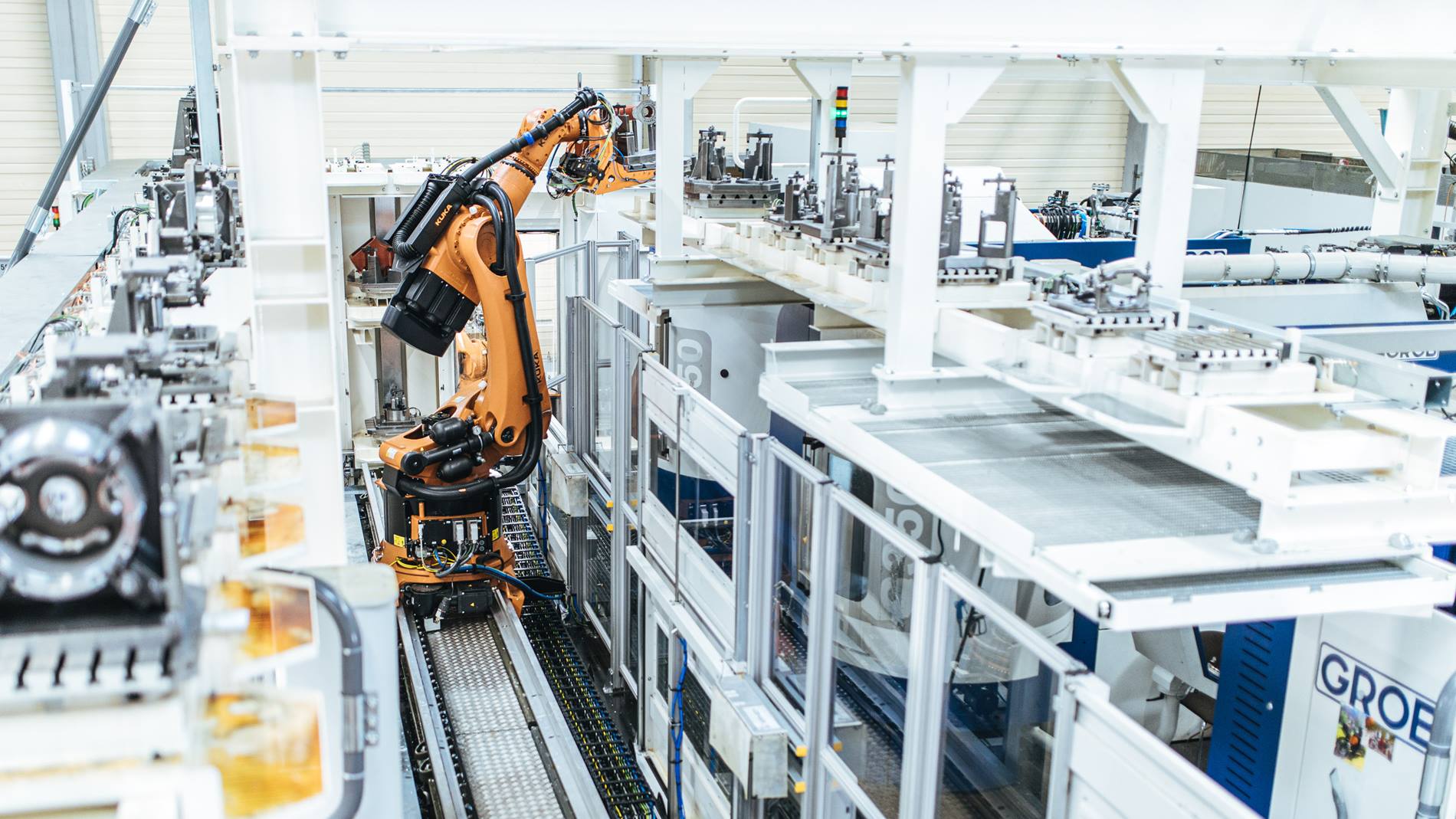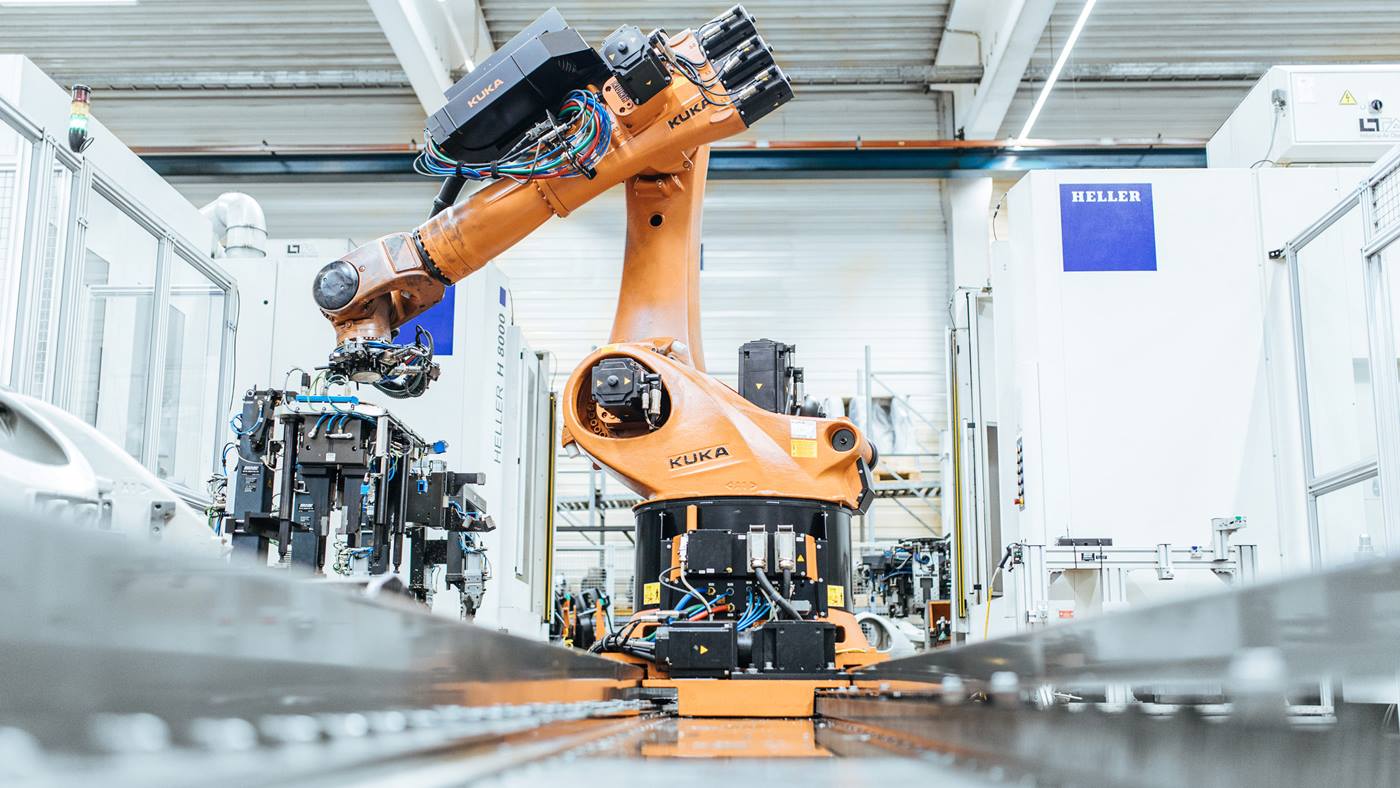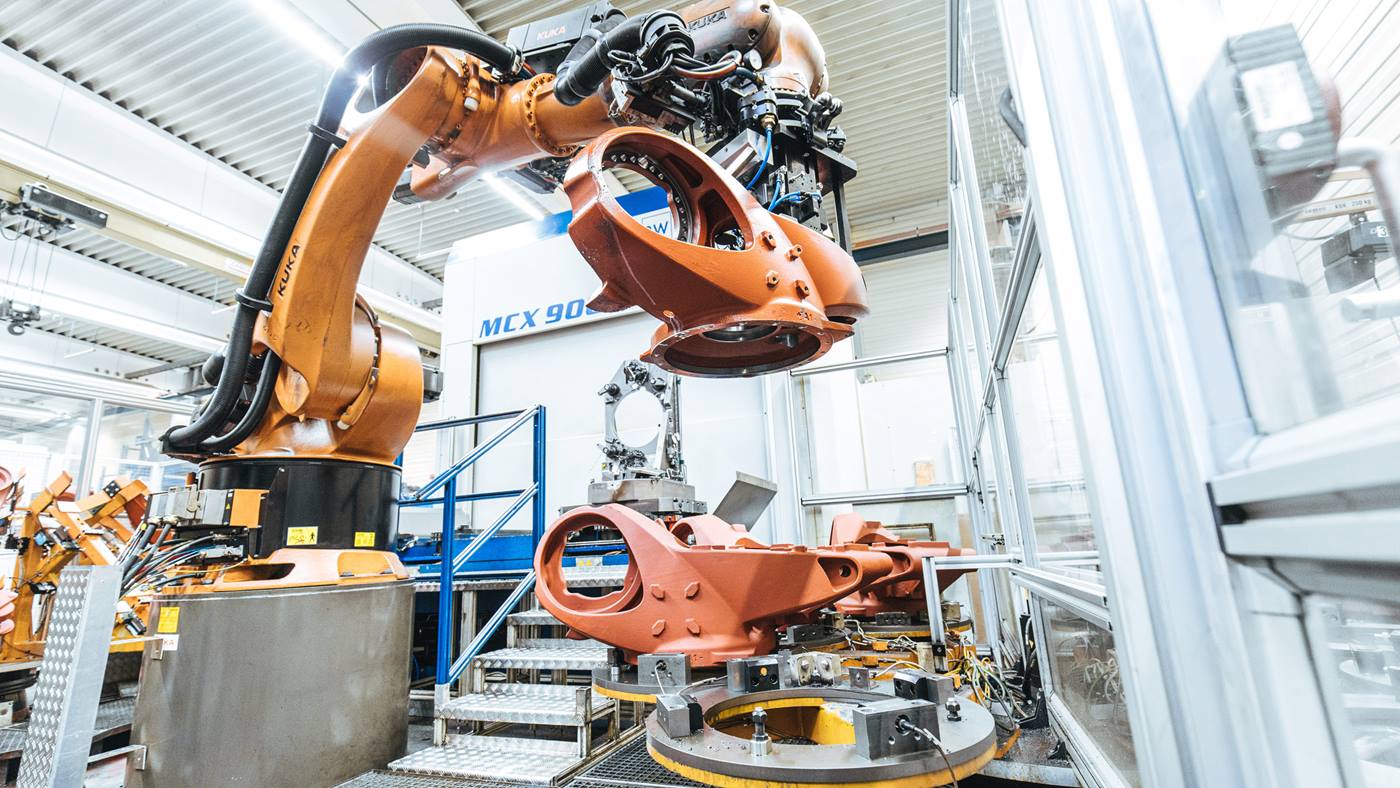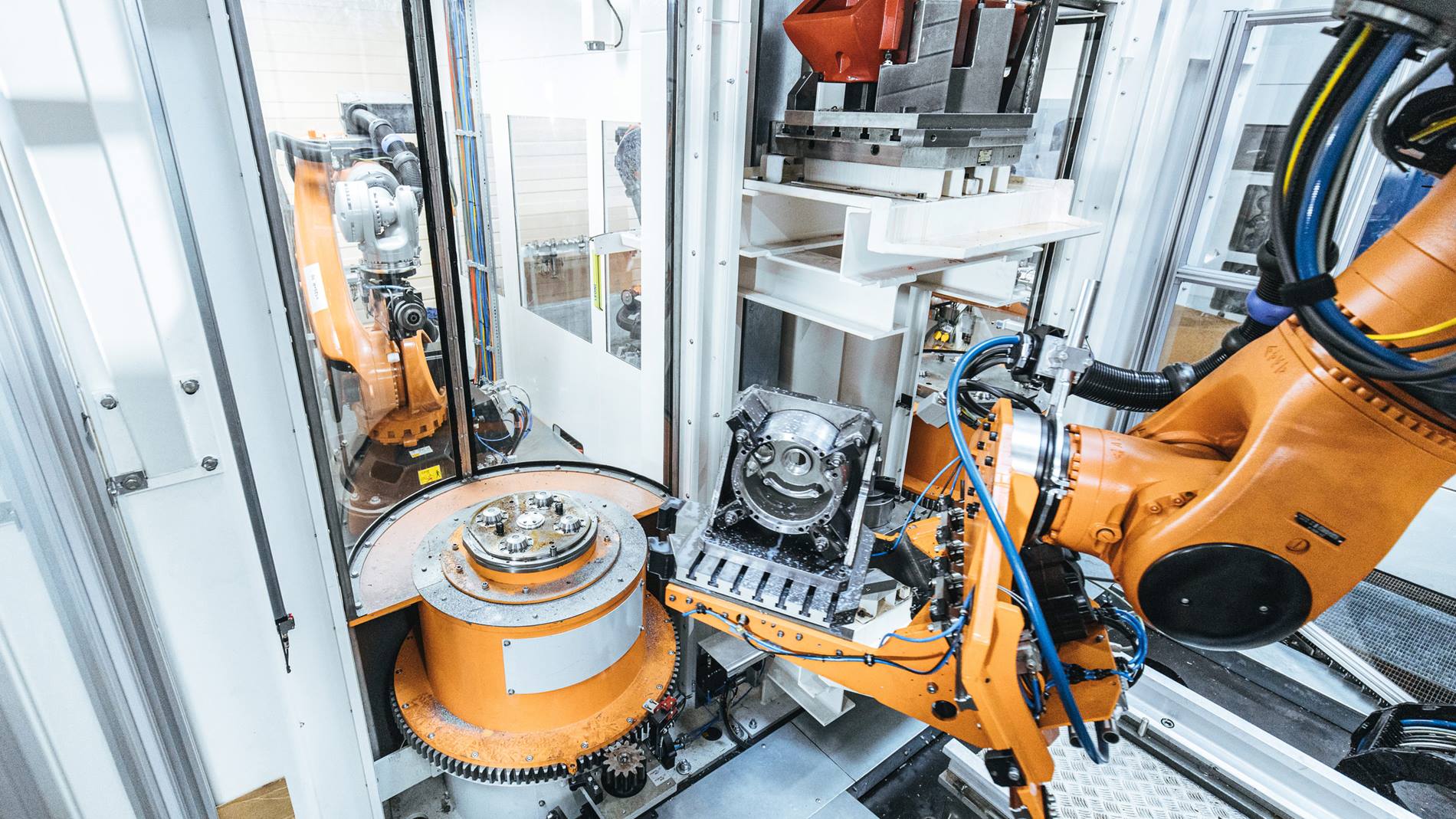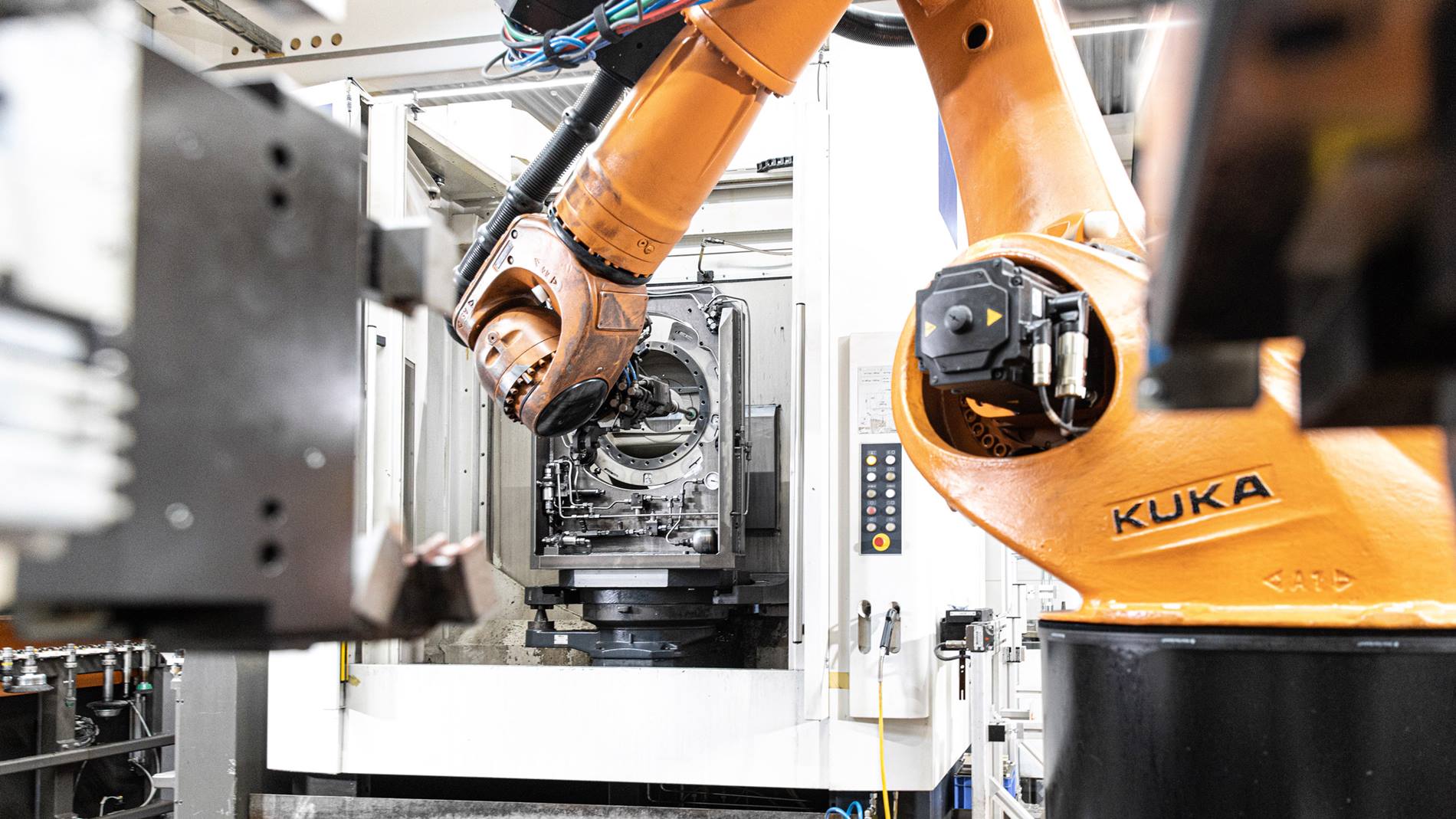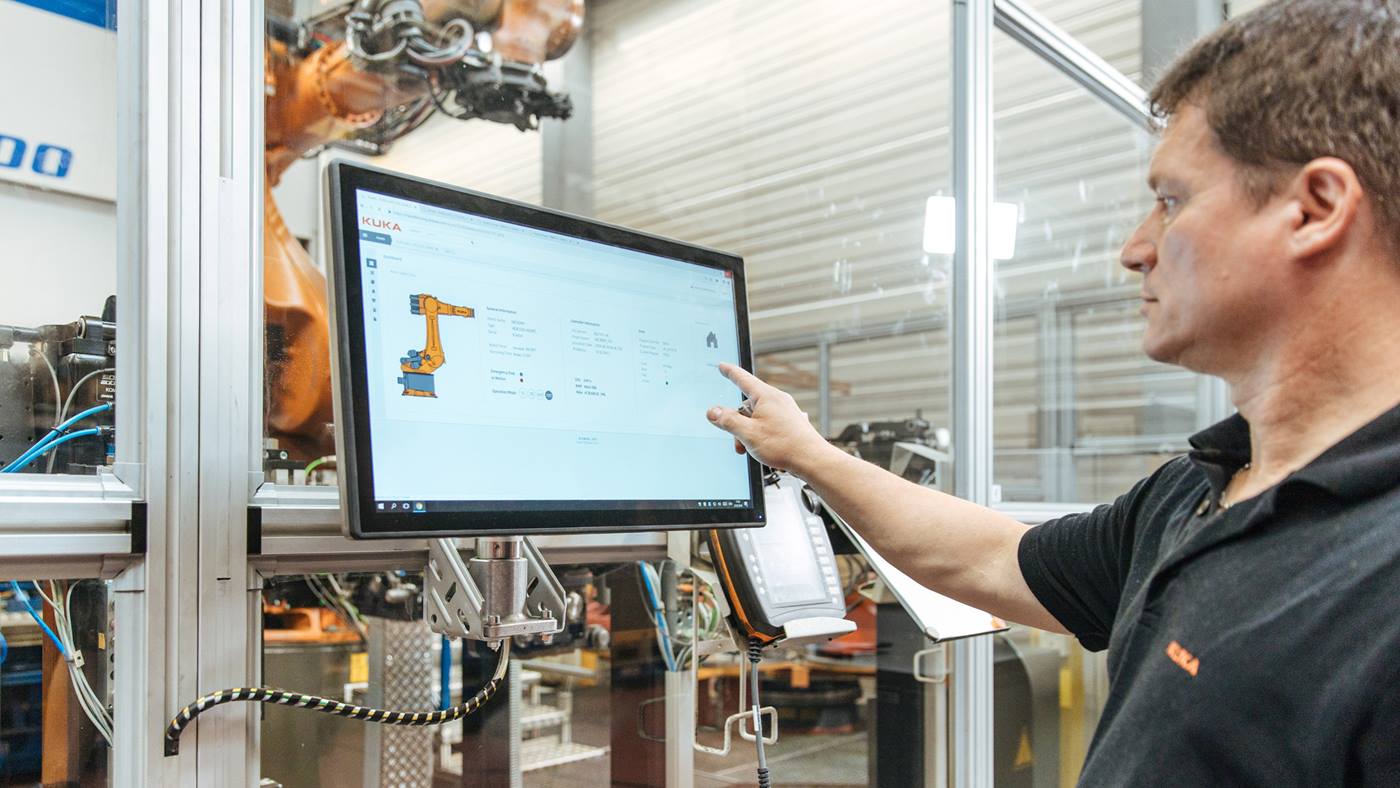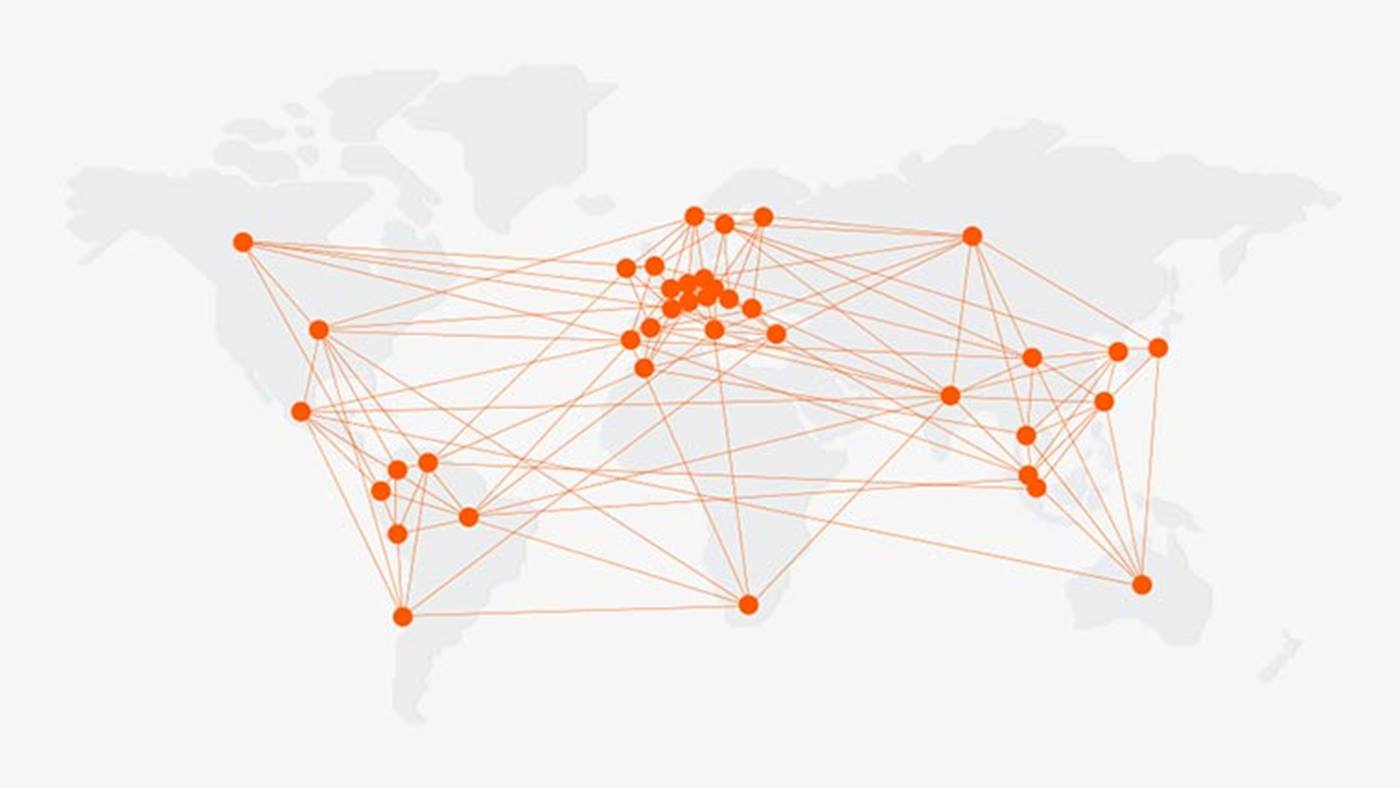Increased efficiency through the automated loading and unloading of machines
“In this hall, the robots work on the various components that we need to produce our robots,” says Rainer Eder-Spendier, Administrator for Automation and Robotics, in summary. Among other things, the robots machine and process base frames, rotating columns and link arms. The components are assembled in the adjacent robot assembly shop. Since the robots carry out the loading and unloading of the lathes, production has few operators and can even be unmanned for a certain period of time.

